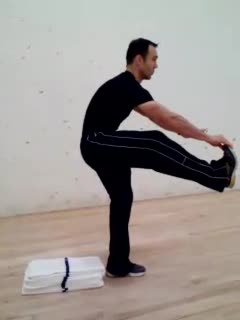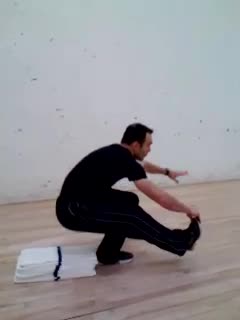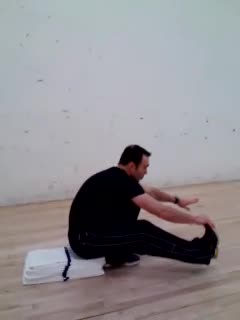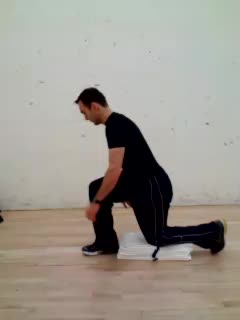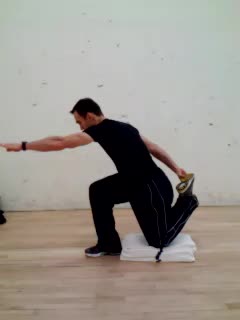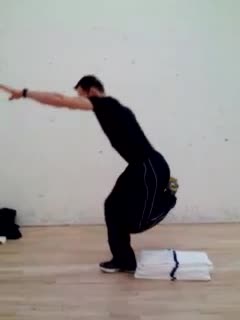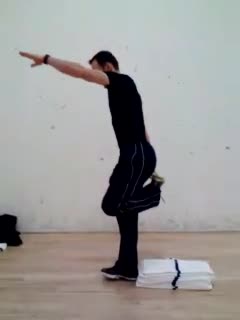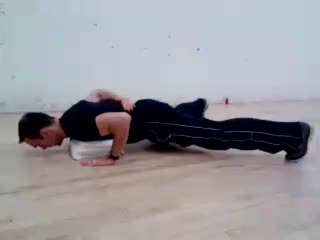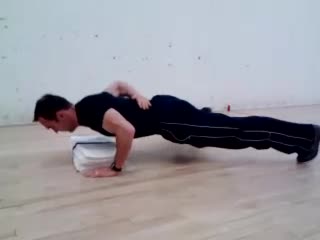Hard-core body weight training
With all the fitness equipment in existence today, who needs body weight training? Answer: Everyone can benefit from body weight training.
If you're away from the gym and don't have equipment to exercise. If you want to know where your body composition is going and don't have formal testing. If you have limited equipment and want to make the most of it. As a matter of fact, in any of the aforementioned situations and more, body weight exercises can be helpful.
To boot, there are little known body weight exercises that have near limitless modification/progression potential. Exercises that can be utilized to achieve elite levels of muscular form and function
let's, first however, discuss the importance of having a default routine to resort to when you can't make it to the gym. If you don't have a default resort, you often do nothing and lose hard earned progress. With just a minimal amount of strength training, though, you can retain and even gain strength during sabbaticals from the gym. So having a default routine of body weight training that can be done anywhere is mandatory for most of us.
As for how body weight training is relevant to body composition, its performance trends correlate very highly with body composition trends. Think about it, can you get better at lifting your body weight if you're gaining fat/losing muscle? .....Unlikely. You can, however, bet the farm that someone who performs pullups and 1-legged-squats with ease is going to have a pretty lean body to show for it regardless of what she/he weighs.
To expand on the equipment rationale for body weight training, consider situations where sufficient weight/equipment isn't feasible to do traditional exercises. Situations like having a squat capacity far exceeding the tonnage available or when the tonnage is available but back pain forbids using poundage sufficient to train the thighs. In either situation exercises that make lifting the body-weight difficult can be utilized for sufficient leg tension.
So now that you're sold on the importance of body weight training, what are some of the best exercises and progressions this type of training has to offer? Well, as is the case with gym exercises, the best body weight exercises tend to be squat, push, and pull variations. Unlike gym exercises, however, body weight exercises often require progression of range of motion and angle before resistance.
Some example squat, push. and pull variations great for body weight training include the 1-legged-squat, the airborne lunge, the 1-arm pushup, and 2-arm/1-arm supine row/pullup. Each of the exercises mentioned along with their progressions are depicted/explained below.
1. The 1-legged squat
|
|
Also known as the pistol, the 1-legged squat involves standing up with 1 leg from a squat/sit position descended from 1 or 2 legs. When descending with 1 leg, only the foot of the working leg contacts the ground while the non-working foot is suspended out in front of you. When descending with 2 legs, only the working foot contacts the ground during the stand with the non-working foot only contacting the ground during the descent.
As far as progression of the 1-leg squat goes, it's probably best to attain the ability to stand from a parallel position before adding resistance. Progressing to a parallel position is as simple as gradually lowering the seat you stand from via sitting on fewer and fewer towels/books. Increasing resistance can take the form of holding any weighted object against the body.
2. Airborne lunge
|
|
The airborne lunge, much like the 1-legged squat, is standing up with one leg. The non-working leg, however is positioned behind the body with the shoe tip held in the opposite hand much like a quadriceps stretch. Once in that position, descend until the back knee touches the designated surface (often elevated for beginners).
Progressing the airborne lunge, like many body-weight exercises, entails a combination of ROM and resistance progression. In most cases, the surface you lower the back knee to is progressively lowered until it's the same level as the foot of the working leg. Once you're airborne lunging knee from the floor, you can hold a dumbbell in the free hand.
3. The 1 arm pushup
|
|
The 1 arm pushup is performed like a regular pushup except all the work is done with 1 arm. 1 arm pushups are initiated from a pushup position with a wide stance and the non working arm behind the back. Once in the proper stance, descend the chest until it touches the intended surface. Following chest contact with the designated surface, push through the palm to elevate back to start position.
Progressing the range of 1 arm pushups can be done by descending the chest to a gradually shortening stack of towels or anything else. Adding load to the 1 arm pushup can entail wearing a backpack containing progressively heavier loads.
4. 1 arm supine row
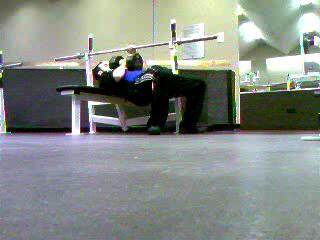 |
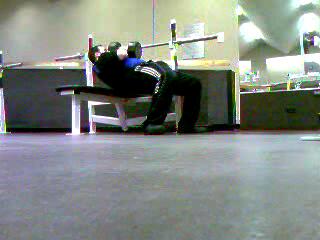 |
Supine rows with 1 arm are simply pulling up one's torso from a supine/lying position with 1 arm. In gyms 1 arm supine rows are often done from under a low supported barbell in a power rack. Without power racks, however, 1 arm supine rows can be done using a towel draped over something sturdy. Whether in the gym or elsewhere, pull the side of your chest to your wrist to get the most out of 1 arm supine rows.
To progress the range of 1 arm supine rows try to pull the side of the ribs gradually higher up the arm until it reaches the wrist. Load is added to the 1 arm supine row by simply holding progressively heavier dumbbells on top of the chest with the free hand.
To conclude
The use of body weight training has many benefits including body composition estimate, independence of equipment, and optimization of limited equipment. Some great body weight training moves include the 1 legged squat, the airborne lunge, the 1 arm pushup, and the 1 arm supine row. As is the case with most body weight training, these exercises offer both ROM and resistance as progression options.
